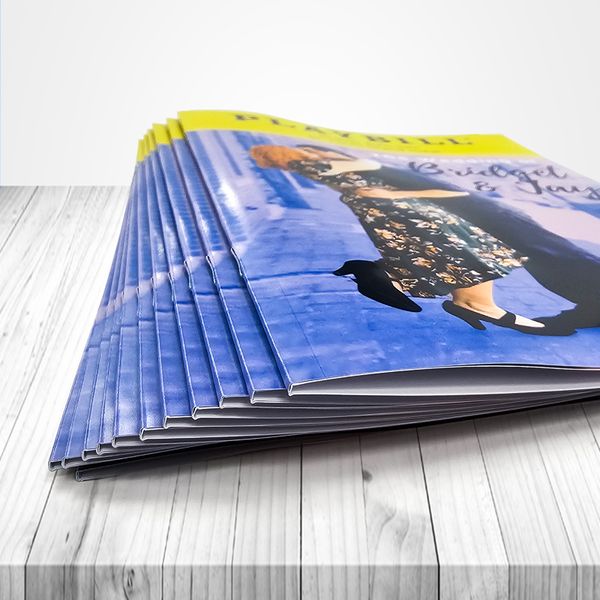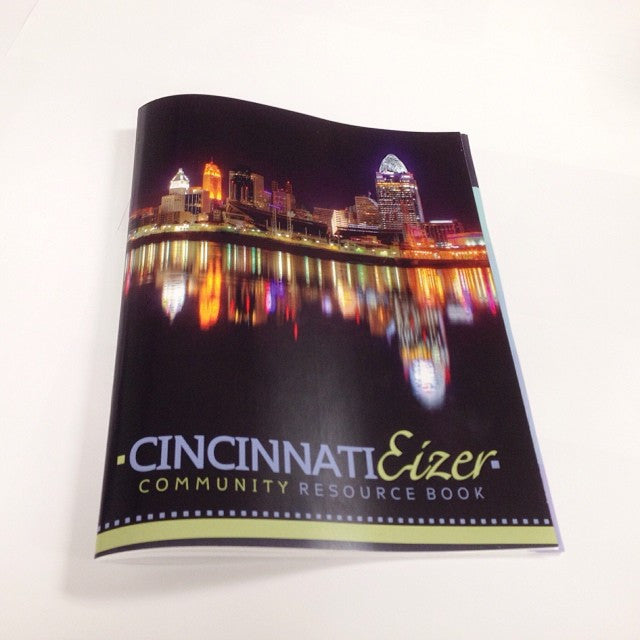Harnessing the Impact of Color Psychology in Booklet Printing
Harnessing the Impact of Color Psychology in Booklet Printing
Blog Article
The Crucial Overview to Comprehending Pamphlet Printing Options and Techniques
The process of booklet printing entails numerous considerations that can significantly impact the last item. From choosing the appropriate layout and dimension to comprehending the nuances of binding approaches, each option plays an essential role. In addition, elements such as paper supply and printing methods further influence the efficiency of the brochure. As one browses these options, it becomes necessary to grasp how they adjoin and what that implies for the overall result.
Recognizing Brochure Layouts and Dimensions
When thinking about pamphlet printing, comprehending the different layouts and dimensions offered is necessary for attaining the desired discussion. Booklets can be created in numerous layouts, consisting of saddle-stitched, spiral-bound, and perfect-bound, each offering distinct benefits. Usual sizes range from standard letter (8.5 x 11 inches) to smaller sized alternatives like A5 (5.8 x 8.3 inches), enabling adaptability based upon material and target audience.Selecting the ideal size can affect both the format and reader interaction. Larger sizes may match visually driven content, while smaller sized layouts may be a lot more user-friendly and mobile. In addition, the variety of pages impacts the option of binding method, as thicker brochures might need tougher bindings. Inevitably, understanding these facets allows for a more tailored technique, making certain that the end product straightens with the designated message and aesthetic, improving the total performance of the interaction.
Selecting the Right Paper Supply

Binding Techniques: Options and Factors To Consider
When it concerns binding techniques for pamphlets, numerous options are available, each with unique advantages. Saddle stitch binding provides a cost-efficient solution for thinner booklets, while best binding strategies provide an even more refined look for thicker magazines. Wire-O binding stands apart for its sturdiness and ease of usage, making it optimal for files that need adaptability.
Saddle Stitch Binding
Saddle stitch binding offers a practical and affordable remedy for putting together brochures, making it a popular choice among businesses and authors. This binding approach includes folding sheets of paper in half and stapling them along the fold line, creating a well organized and cool appearance. Usually appropriate for brochures with a lower page matter, saddle sewing is optimal for magazines, pamphlets, and instructional products. The simpleness of this technique enables quick production and is often preferred for short runs or promotional things. Nonetheless, it is necessary to keep in mind that saddle stitch binding may not appropriate for thicker brochures, as the spine might not hold up under increased weight. Overall, it continues to be a trusted option for several printing jobs.
Perfect Binding Strategies
Perfect binding is a commonly utilized method that provides a refined and professional surface to publications and booklets. This technique includes gluing the pages together at the spine utilizing a strong adhesive, permitting a tidy side and the capacity to hold a bigger number of web pages compared to saddle stitching. Perfect binding is specifically suitable for thicker pamphlets, such as magazines and annual records, where a sturdy, flat back is desired. Furthermore, it provides the alternative for a printed cover that can be created to boost visual charm. However, factors to consider such as web page count, paper weight, and the meant usage of the pamphlet must be taken into account, as they can affect toughness and total quality.
Wire-O Binding Options
Wire-O binding, known for its sturdiness and flexibility, uses a superb alternative for booklets that require simple web page turning and a specialist look. This binding approach uses a collection of steel loops that hold pages securely, allowing them to lie flat when open. It is particularly ideal for catalogs, presentations, and guidebooks as a result of its robust nature. Wire-O binding is available in numerous colors and diameters, suiting different page counts and thicknesses. In addition, it allows the inclusion of covers and tabs, boosting the booklet's overall visual. Considerations for Wire-O binding include the option of wire shade, the dimension of the loops, and the extent of customization wanted, all of which can exceptionally influence the last item's look and capability.
Digital vs. Offset Printing: Which Is Best for You?
When choosing a printing approach for brochures, understanding the distinctions between electronic and balance out printing is necessary. Digital printing uses modern innovation to produce high-grade prints rapidly and economically, making it optimal for brief runs or jobs calling for quick turn-around times. It permits personalization, providing the capability to publish on-demand with very little waste.In comparison, offset printing is a traditional technique that excels in creating huge quantities with consistent top quality. It involves moving ink from a plate to a rubber covering, then to the paper, which leads to specific details and dynamic shades. Nonetheless, counter printing commonly calls for longer configuration times and is much more affordable for larger volumes.Ultimately, the choice in between digital and balance out printing relies on project demands, budget plan, and wanted amount. For small, time-sensitive projects, electronic could be the best option, while balanced out might be preferable for larger, high-grade manufacturings.

Creating Your Booklet: Tips and Ideal Practices
When making a pamphlet, cautious attention to layout, font selection, and shade usage can considerably improve its effectiveness. A well-structured format overviews the viewers's eye, while appropriate fonts assure readability and share the wanted tone. Furthermore, effective use shade can evoke feelings and emphasize crucial information, making the overall layout much more impactful.
Choosing the Right Format
Exactly how can one efficiently choose the appropriate format for a brochure? It is important to review the brochure's objective and target audience. A tidy, organized format improves readability and involvement. Using a grid system can assist in lining up components constantly, creating a specialist appearance. Furthermore, including visual power structure with differing sizes and positionings of photos and text can lead the visitor's eye and highlight crucial info. It is also important to leave sufficient white space, which prevents overcrowding and enables better focus. Lastly, examining different designs with mock-ups can give insight right into how the style executes in real-world scenarios, making sure that the last item meets both useful and aesthetic requirements.
Picking Suitable Font Styles
An appropriate font style can substantially boost the total style of a pamphlet, enhancing the layout and strengthening the web content's message. these details The option of fonts should consider readability, particularly for body text, as it ensures the info comes to all visitors. Sans-serif font styles are frequently liked for electronic styles, while serif font styles can lend a conventional feel in printed materials. It's recommended to limit font selections to 2 or 3 to preserve visual coherence. Additionally, typeface dimension plays a crucial function; headings should be not overwhelming however unique, while body text ought to be comfy for reading. When selecting font styles, alignment with the brochure's style and target audience is essential for reliable interaction and aesthetic appeal.
Efficient Usage of Color
Shade functions as an effective device in brochure layout, directing and forming understandings viewers emotions. It can stimulate find here sensations of count on, peace, or excitement, depending on the colors picked. Designers must take into consideration color theory principles, making certain that the chosen combination lines up with the pamphlet's message and target audience. Making use of cozy colors like red and orange can produce necessity, while cooler tones like blue and green foster tranquility.Additionally, contrast plays an important function; corresponding shades can boost readability and aesthetic allure. Uniformity in shade use throughout web pages better strengthens brand name identification and communication. Inevitably, efficient shade implementation not just records attention yet likewise enhances the booklet's function, making it an important element of successful layout.
Finishing Touches: Coatings and Unique Results
While numerous think about the material and layout of a pamphlet the most vital aspects, the finishing touches, such as coverings and special impacts, play a crucial duty in improving its overall appeal. Coatings can give security and resilience, guaranteeing that the booklet holds up against damage. Matte surfaces offer an innovative, non-reflective surface, while shiny finishes can make colors show up even more dynamic and eye-catching. Special results, like embossing or aluminum foil stamping, include a tactile measurement that can produce a memorable perception. These techniques can highlight details areas, accentuating crucial information or producing visual rate of interest. Additionally, UV layer can offer a high-shine finish that elevates the total look.Together, these completing touches not just improve the pamphlet's aesthetic yet likewise communicate expertise and attention to information, ultimately leaving an enduring effect on the reader.
Price Considerations for Pamphlet Printing
Understanding the different price considerations for brochure printing is important for organizations and organizations intending to optimize their budget plans. Trick elements influencing prices consist of the choice of binding, ink, and paper methods. Better products, such as superior paper or specialized inks, typically boost the overall expense. Additionally, the my latest blog post dimension and page count of the brochure play a substantial role; larger brochures need even more sources and time to produce.Another crucial factor to consider is the printing method, whether electronic or balanced out, as each has its very own prices framework and viability for various quantities. Organizations ought to also factor in design expenses, which can vary based upon intricacy and the use of expert services. Eventually, delivery and handling fees can contribute to the overall, especially for huge orders. By evaluating these aspects, organizations can make enlightened choices that align with their monetary abilities while attaining the wanted quality in their published materials.
Regularly Asked Questions
What Are the Environmental Effects of Brochure Printing?
The environmental impacts of pamphlet printing include logging from paper production, carbon emissions from transportation, and waste generation from disposed of products - Booklet Printing. Sustainable practices, such as utilizing recycled paper and environment-friendly inks, can mitigate these impacts
Exactly How Can I Ensure Shade Accuracy in My Brochure?
To assure color precision in a pamphlet, one ought to use adjusted screens, employ professional color profiles, carry out examination prints, and select top quality printing solutions that offer color matching and proofing alternatives for ideal results.
What Is the Common Turn-around Time for Brochure Printing?
The typical turnaround time for booklet printing differs relying on the complexity and amount - Booklet Printing. Usually, it varies from a couple of days to two weeks, influenced by factors such as publishing methods and completing requirements
Are There Minimum Order Quantities for Booklet Printing?

Can I Print Booklets in Several Languages?
Publishing booklets in numerous languages is feasible. Many printing services supply options for multilingual or bilingual layouts, permitting for effective communication. Cautious preparation assurances that design elements suit various languages without compromising readability or looks. Additionally, factors such as paper stock and printing methods further influence the efficiency of the brochure. When considering booklet printing, comprehending the various layouts and sizes available is crucial for accomplishing the desired presentation. When picking a printing technique for brochures, comprehending the distinctions in between electronic and counter printing is vital. Additionally, the dimension and page matter of the pamphlet play a substantial role; larger booklets call for even more sources and time to produce.Another essential factor to consider is the printing strategy, whether digital or offset, as each has its own pricing framework and viability for various amounts. The environmental influences of booklet printing include logging from paper production, carbon discharges from transportation, and waste generation from thrown out products.
Report this page